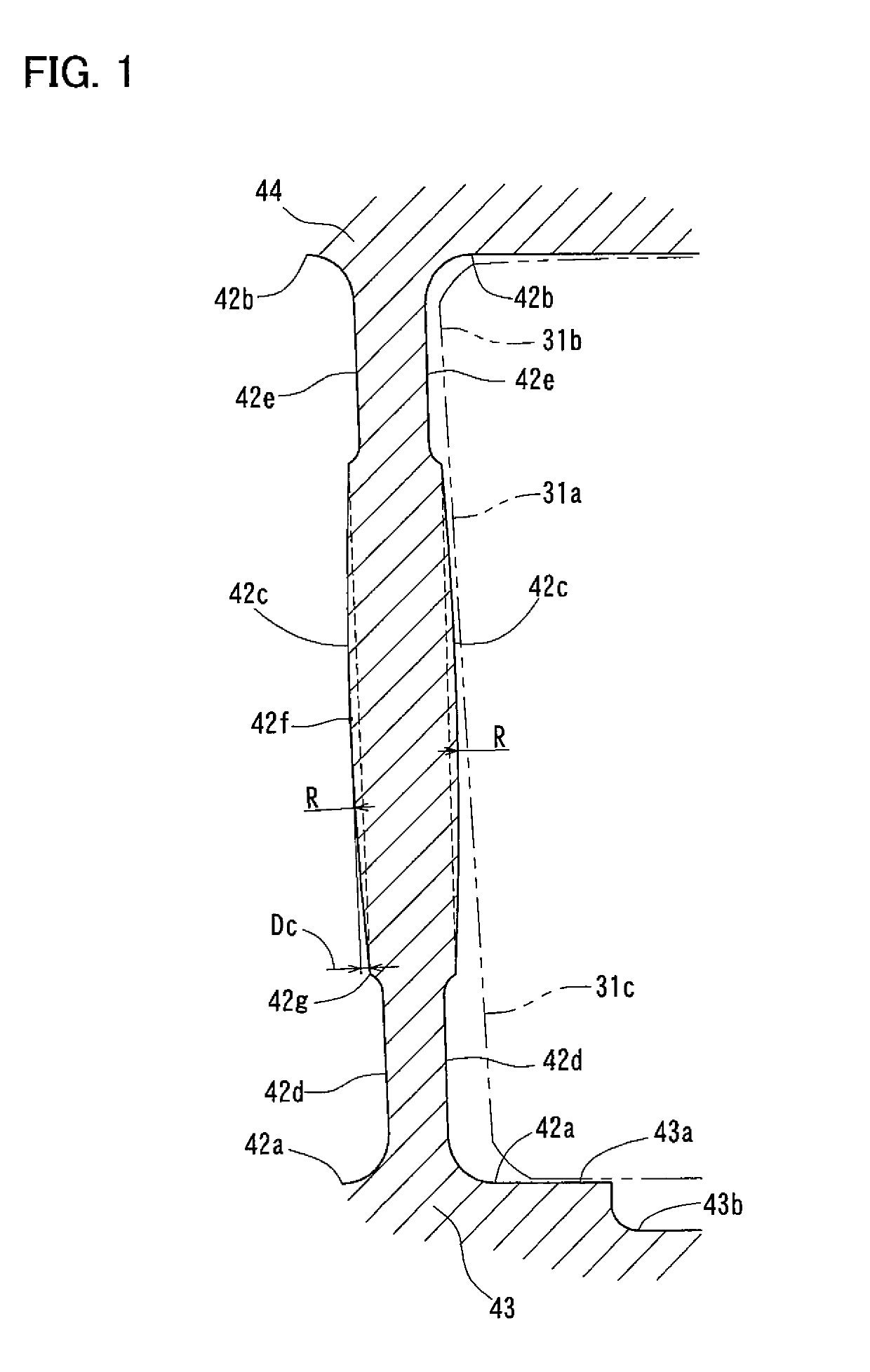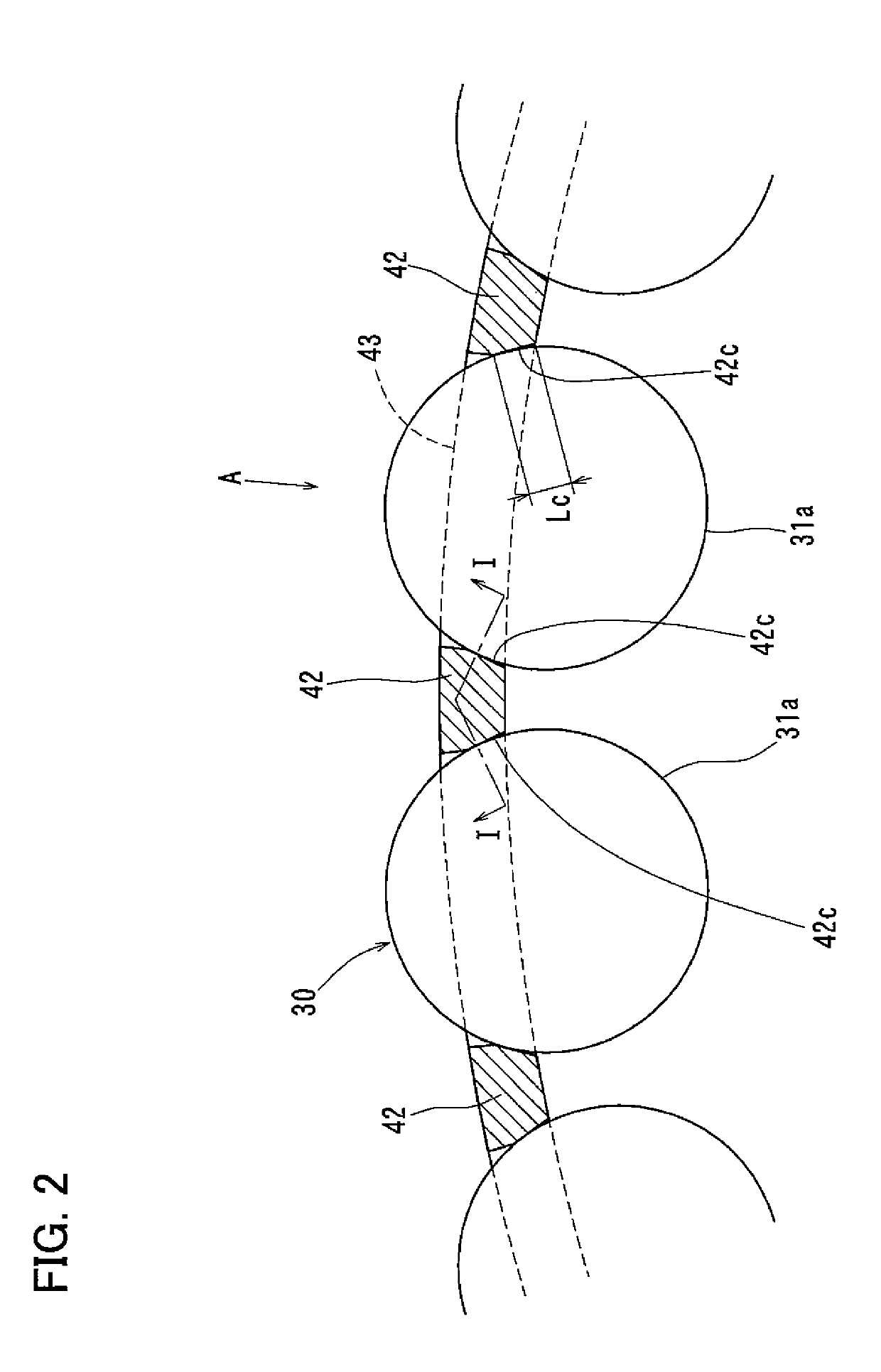Retainer and tapered roller bearing
a tapered roller bearing and tapered roller bearing technology, which is applied in the direction of rolling contact bearings, shafts and bearings, rotary bearings, etc., can solve the problems of reducing increasing difficult to effectively reduce the rotation torque of the bearing, so as to reduce the shear resistance of oil, reduce the contact length, and reduce the stirring resistance of oil
- Summary
- Abstract
- Description
- Claims
- Application Information
AI Technical Summary
Benefits of technology
Problems solved by technology
Method used
Image
Examples
first embodiment
[0036]Now referring to FIGS. 1-5, a tapered roller bearing according to the present invention is described, which includes, as shown in FIG. 4, an inner race 10 having an outer periphery formed with a raceway surface 11, and including a small flange 12 and a large flange 13; an outer race 20 having an inner periphery formed with a raceway surface 21; and a retainer 40 formed with pockets 41 in which tapered rollers 30 are received. As used herein, the words “circumferential direction”, “circumferential” and circumferentially” refer to the circumferential direction around the center axis of the bearing; the words “axial direction”, “axial” and “axially” refer to the direction of the center axis of the bearing; and the words “radial direction”, “radial” and “radially” refer to a direction perpendicular to the center axis of the bearing. The center axes of the inner race 10, the outer race 20, and the retainer 40 coincide with the center axis of the bearing.
[0037]As shown in FIG. 5, ea...
fifth embodiment
[0069]In an arrangement in which the crossbars are free of the first and second recessed surfaces, each convex guide surfaces may have a composite shape consisting of a plurality of curves having different radii of curvature, and or a straight line or lines smoothly connected together. The fifth embodiment, shown in FIG. 10, is such an example.
[0070]In the fifth embodiment of FIG. 10, the crossbars 70 are free of the first and second recessed surfaces so that each convex guide surface 71 extends the entire length of the crossbar 70 between the corresponding two rounded corners, with each guide surface 71 having a composite shape consisting of curves having different radii of curvature. In particular, as with the second embodiment, each guide surface 71 includes a central portion 71a having a first radius of curvature R1, the remaining portions 71b having a second radius of curvature R2.
[0071]In an arrangement in which the convex guide surfaces are provided, any or all of the first t...
PUM
 Login to View More
Login to View More Abstract
Description
Claims
Application Information
 Login to View More
Login to View More - R&D
- Intellectual Property
- Life Sciences
- Materials
- Tech Scout
- Unparalleled Data Quality
- Higher Quality Content
- 60% Fewer Hallucinations
Browse by: Latest US Patents, China's latest patents, Technical Efficacy Thesaurus, Application Domain, Technology Topic, Popular Technical Reports.
© 2025 PatSnap. All rights reserved.Legal|Privacy policy|Modern Slavery Act Transparency Statement|Sitemap|About US| Contact US: help@patsnap.com



